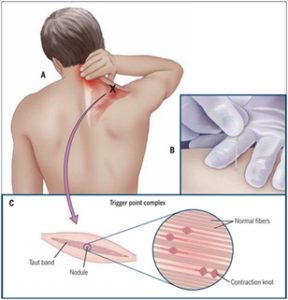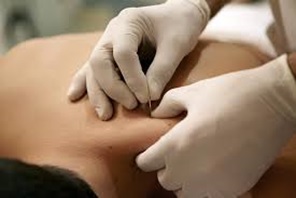What is Dry Needling? What is Trigger Point Dry Needling? What is Intramuscular stimulation? How does Dry Needling differ from Acupuncture? Does it Hurt?
These are some of the various questions I get asked in the clinic when discussing a highly useful and successful treatment technique with many of my clients.
There are two main theories behind dry needling and its application.
- The Trigger Point Model (developed by Travell and Simon): A trigger point is that tight spot/band in your muscle tissue that you are aware of or become aware of when someone pushes on it. “I have a knot in my shoulder and it won’t go away”. This can be due to a chemical imbalance within your muscle tissue, a lack of oxygen and therefore the inability to completely relax. This then leads to a build-up of waste product by the muscle which leads to a change in pH balance of your muscle tissue which your brain then subconsciously registers. There can also sometimes be an increased level of chemical release by your nerves which cause the muscle fibres to contract or shorten, thus your muscles gradually tighten.
- Neuropathic pain and Intramuscular stimulation (C. Chan Gunn) theory: Muscle shortening/tightness at the spine (due to direct injury or indirect) can cause pain or disturbance elsewhere in the body because the nerve that supplies that area has been affected as it exits the spine. The muscle tissue supplied by that nerve becomes hypersensitive and the brain then registers this as an area of pain or injury. This muscle tightness at the spine then needs to be released to take the pressure of the nerve to stop further disruption and prevent an injury from happening further afield. (Examples: Spondylosis, Achilles tendinopathy, lateral epicondylalgia, lumbar Radiculopathy.)
As you can see, Dry Needling can have effects on multiple systems in the body and therefore can be very beneficial for people with many forms of injuries, niggles, complaints or pain.
The needle used for Dry Needling is the same as the needle used for Acupuncture. It is tapped into the muscle at the point of tightness/knot in the tissue or near the spine to address the muscle’s nerve supply. By inserting the needle, a local inflammatory response is produced (increased blood flow) therefore changing the chemical balance in the tissue. If a twitch response from that tissue is elicited (the muscle jumps), you are also restoring chemical balance within the nerve and the muscle plus releasing the muscle shortening/tightness.
When dry needling, the goal is to try and elicit a twitch response from that muscle. Some people describe this twitch as being painful. This muscle twitch is instantaneous and uncontrollable, for this reason it can give the patient a fright and cause the person to experience a moment of pain (<2seconds), whilst some people are completely unaffected by it. The big difference with dry needling versus acupuncture is that the needle is only in the body for less than one minute with dry needling and is moved around, whereas with acupuncture the needle may be left in place for an extended period of time.
Some people experience muscle tenderness, tightness or stiffness directly after dry needling, on occasion some can feel nauseous, tired or fatigued and occasionally some people can become emotional. We encourage people to eat prior to any treatment involving needles, keep yourself moving, stretch, drink water and use heat if required afterwards. Side effects from the dry needling itself should last no longer than 48hours after the treatment.
Conditions that can be treated using dry needling include:
Achilles and Elbow Tendinopathies
Whiplash injuries
Stress tension/ Headaches
Lumbar Radiculopathies, Sciatica
Muscle imbalances/Joint dysfunction
Chronic Pain
An example of the complicated human body and how dry needling or Intramuscular stimulation could help you:
People present at the clinic describing the development of Tennis elbow or pain at the elbow with gripping tasks. A question I always ask someone like this is… have you ever had any whiplash injuries/ neck injuries/car accidents/ neck pain or stiffness in your lifetime? It could be that your neck is the cause of your elbow issues, and frequently it is!
If you have any niggles or are carrying any injuries that just won’t go away or want to feel better faster, then dry needling could be for you! Ashley has completed her advanced dry needling certificate and Anna her introductory course, so give the clinic a call (03) 4431711 or book in online by clicking here.
Written by Ashley Booth

